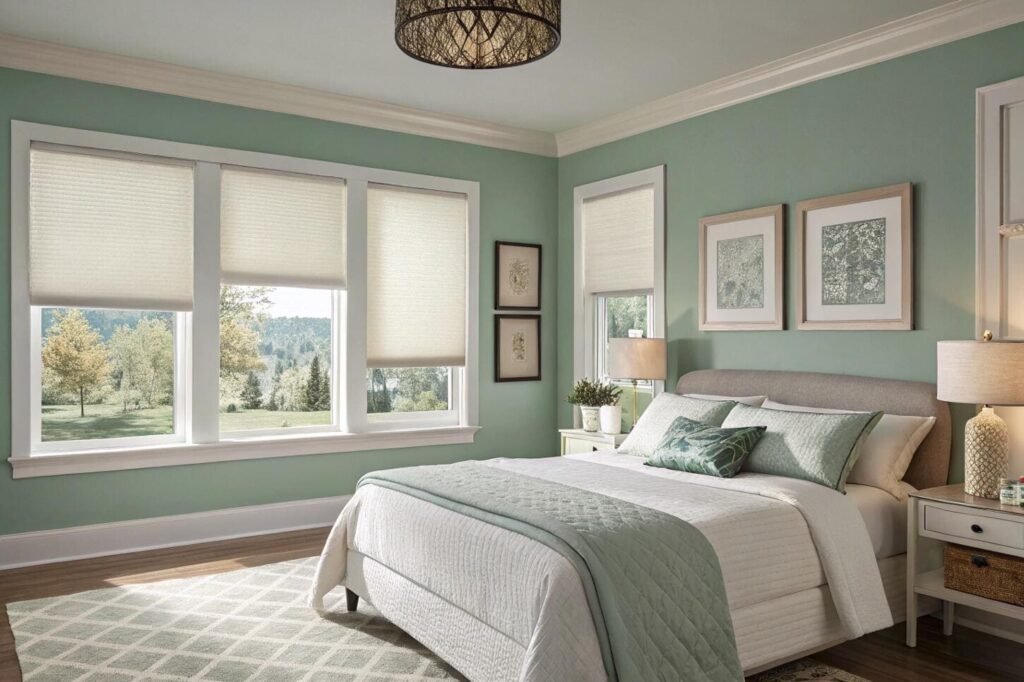Pets destroy expensive blinds through scratching, chewing, and climbing, creating safety hazards while wasting hundreds of dollars annually. Smart material choices and pet-proofing strategies[^1] protect both investments and beloved animals.
Aluminum venetian blinds, cordless cellular shades, and motorized roller blinds offer the best pet durability and safety. These materials resist pet damage while eliminating cord strangulation risks that threaten pet and child safety.
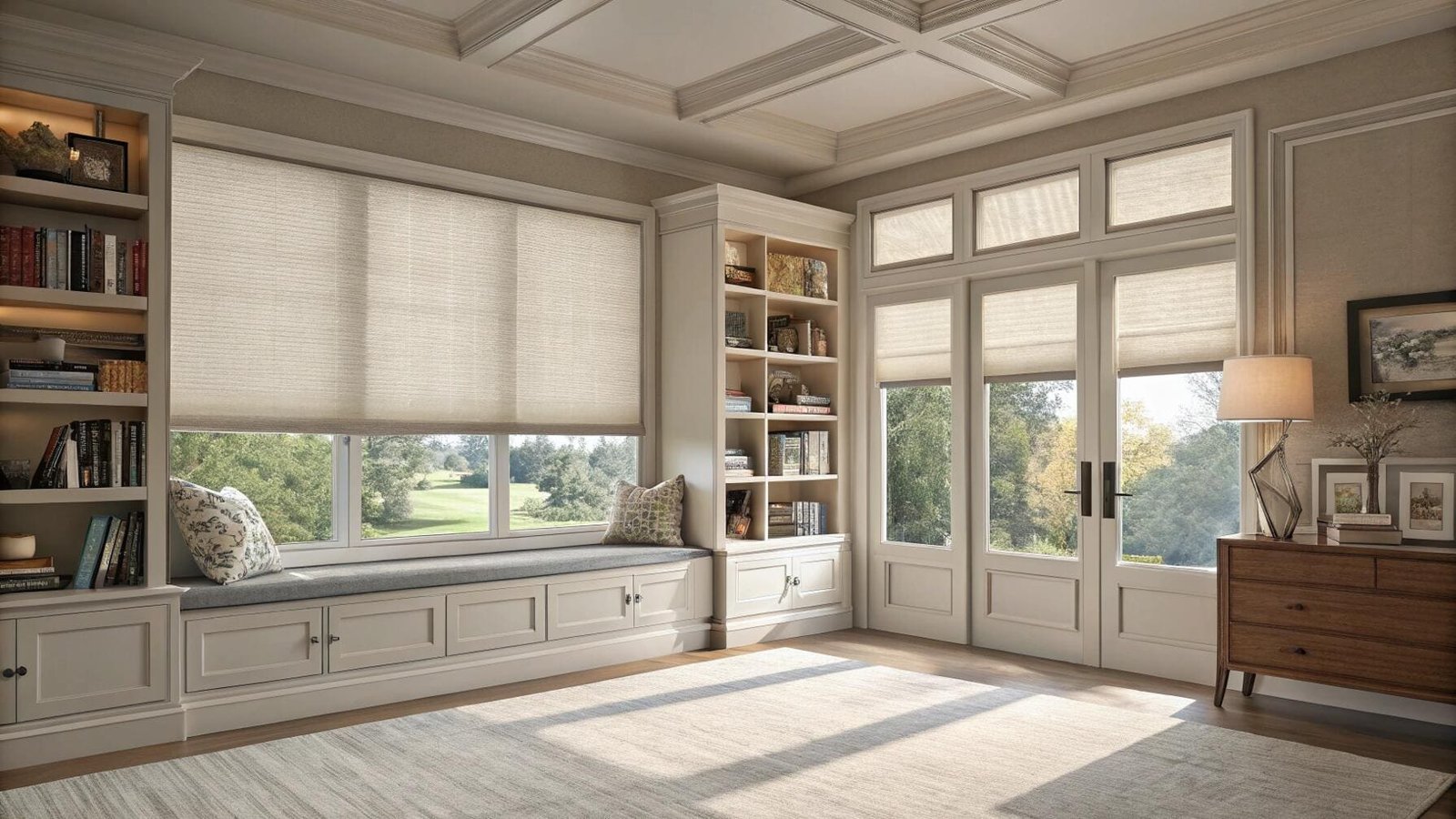
I learned this lesson the hard way when my client's golden retriever destroyed $2,000 worth of custom wood blinds in a single afternoon. That expensive mistake taught me to prioritize pet-safe materials and cordless designs for every pet-owning customer.
What are the most durable blinds for pets[^2]?
Pet durability requires materials that resist scratching, chewing, and impact damage while maintaining functionality despite animal interaction. Metal and synthetic materials outperform natural options significantly.
Aluminum venetian blinds offer the highest pet durability through scratch-resistant metal construction and replaceable individual slats. Vinyl and faux wood blinds provide moderate durability while cordless cellular shades resist pet damage through flexible fabric construction.
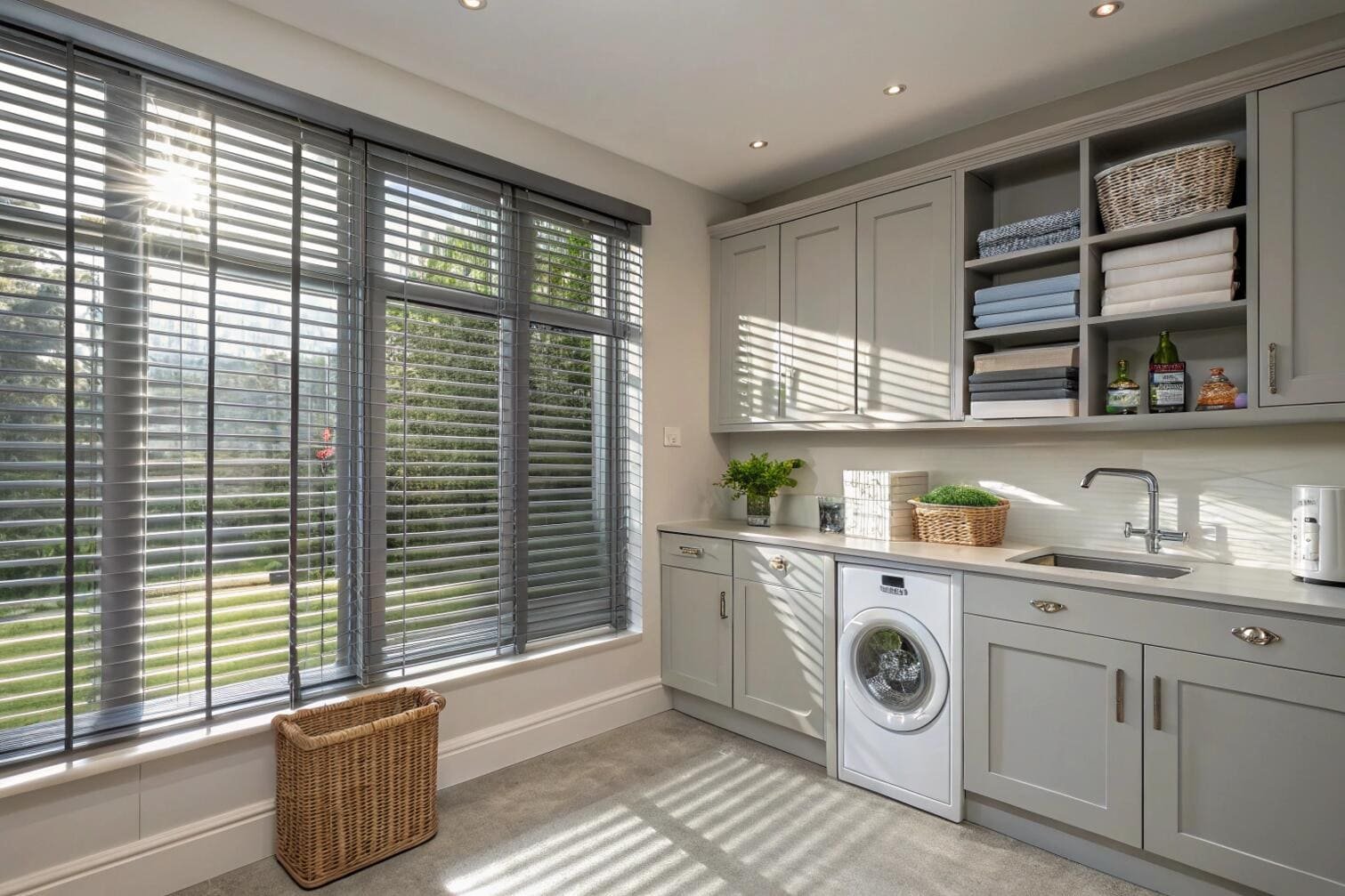
Pet durability testing reveals significant differences between blind materials when exposed to scratching, chewing, and climbing behaviors common in households with cats and dogs. Understanding these differences prevents costly replacements and safety hazards.
Aluminum venetian blinds demonstrate superior durability through metal construction that resists scratching, bending, and chewing damage. Individual slat replacement capability means localized pet damage doesn't require complete blind replacement, making them cost-effective for pet owners.
Vinyl blinds offer moderate pet resistance through synthetic materials that resist moisture and some scratching damage. However, persistent chewing can damage vinyl slats, and sharp pet claws may create permanent scratches that affect appearance and functionality.
Faux wood blinds provide better pet durability than real wood through composite construction that resists moisture and some impact damage. However, they remain vulnerable to persistent chewing and heavy scratching from large dogs or active cats.
Fabric blinds including cellular shades demonstrate unexpected pet durability through flexible construction that absorbs impact rather than breaking. Cordless designs eliminate climbing temptations while honeycomb structures resist puncture damage better than flat fabrics.
Natural wood blinds represent poor pet choices due to susceptibility to scratching, chewing, and moisture damage from pet accidents. Real wood shows every scratch and bite mark while requiring expensive replacement when significantly damaged.
Motorized blinds eliminate many pet interaction opportunities by removing cords and chains that attract animal attention. The elevated mounting and smooth operation reduce pet access and damage potential compared to manual alternatives.
Vertical blinds face unique pet challenges through individual vane vulnerability and bottom chain accessibility that attracts curious animals. Pets can easily damage or destroy individual vanes while playing with chains creates safety concerns.
Pet Durability Rankings
Excellent Durability:
- Aluminum venetian blinds: Scratch-resistant metal construction with replaceable slats
- Motorized roller blinds: Minimal pet contact points and durable fabric options
- Cordless cellular shades: Flexible fabric construction absorbing impact damage
- Vinyl vertical blinds: Synthetic materials resisting moderate pet interaction
Moderate Durability:
- Faux wood blinds: Composite construction with some scratch and chew resistance
- Fabric roller blinds: Depends on material quality and weave density
- Cordless mini blinds: Reduced pet access but vulnerable slat construction
- Roman shades: Fabric dependent with cordless options improving safety
Poor Pet Choices:
- Natural wood blinds: Highly vulnerable to scratching and chewing damage
- Corded blinds: Safety hazards plus increased pet interaction opportunities
- Delicate fabrics: Silk or linen materials easily damaged by pet activity
- Bamboo blinds: Natural materials attractive to pets but easily damaged
How to pet proof blinds?
Pet proofing requires eliminating cords, securing mounting hardware, choosing appropriate materials, and creating barriers that prevent pet access while maintaining blind functionality.
Effective pet proofing combines cordless blind selection, secure mounting above pet reach, protective barriers during training periods, and material choices that resist common pet behaviors like scratching and chewing.
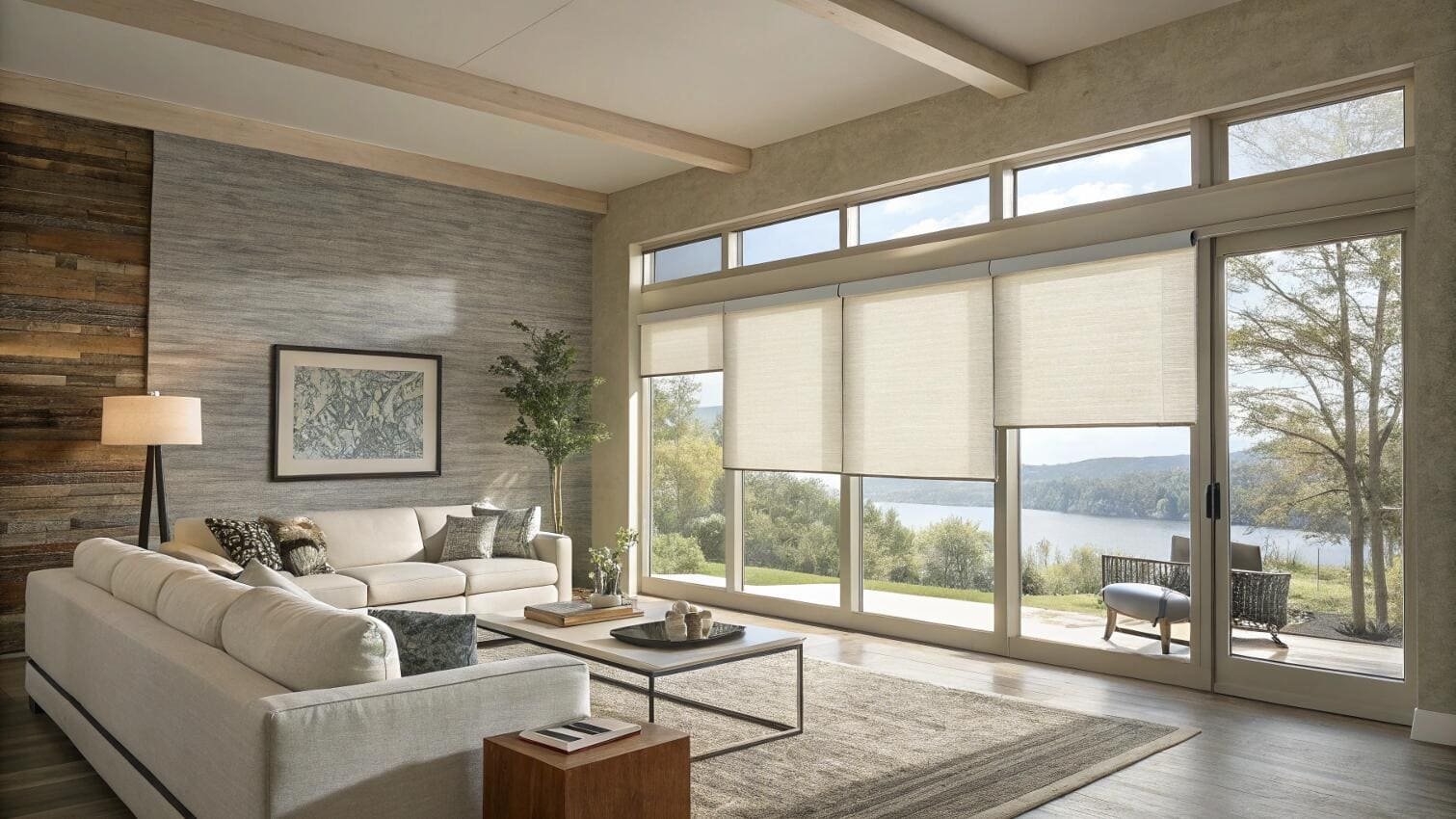
Pet proofing strategies must address both safety concerns and damage prevention through systematic approaches that consider pet behavior patterns, physical capabilities, and common interaction triggers that lead to blind destruction.
Cord elimination represents the most critical pet proofing step through cordless blind selection or cord shortening that prevents strangulation hazards. Cordless operation also reduces pet attraction to moving parts that trigger hunting instincts.
Mounting height adjustments place blind controls and bottom rails above pet reach, particularly important for large dogs and climbing cats. Higher mounting requires longer blinds but significantly reduces pet interaction opportunities and damage potential.
Protective barriers during training periods help establish boundaries while pets learn appropriate behaviors around window treatments. Clear acrylic panels or temporary barriers prevent access while allowing light and visibility.
Deterrent applications including pet-safe sprays[^3] create unpleasant associations with blind areas, though effectiveness varies between individual animals. Consistent application and positive reinforcement training provide better long-term results.
Hardware security prevents pet climbing and playing from loosening mounting brackets or causing blind falls. Extra-secure mounting becomes essential in homes with large, active pets that might impact blinds during play.
Material selection prioritizes pet-resistant options while maintaining aesthetic preferences. Synthetic materials, metal construction, and cordless operation provide the best combination of durability and safety for pet households.
Training integration teaches pets appropriate boundaries around window areas while providing alternative entertainment options. Consistent enforcement and positive reinforcement create lasting behavioral changes that protect blinds long-term.
Pet Proofing Checklist
Safety Priorities:
- Cord elimination: Choose cordless blinds or secure existing cords above pet reach
- Mounting security: Extra brackets and secure hardware preventing blind falls
- Material safety: Avoid toxic materials or small parts that could be ingested
- Sharp edge protection: Ensure cut blind ends are smooth and safe
Damage Prevention:
- Height adjustment: Mount blinds above typical pet reach when possible
- Barrier installation: Temporary protection during pet training periods
- Deterrent application: Pet-safe sprays discouraging blind interaction
- Alternative attractions: Provide appropriate pet entertainment away from windows
Long-term Protection:
- Training programs: Teaching appropriate boundaries around window areas
- Regular inspection: Checking for damage or safety concerns
- Maintenance routines: Keeping blinds clean and functioning properly
- Upgrade planning: Replacing pet-damaged blinds with more durable options
How to prevent a dog from destroying blinds?
Dog blind destruction prevention requires understanding canine motivations, providing alternatives, using deterrents, and selecting dog-resistant blind materials that withstand typical canine behaviors.
Prevent dog blind destruction through cordless blind selection, elevated mounting above jumping reach, boredom prevention with adequate exercise and toys, and positive reinforcement training establishing window area boundaries.
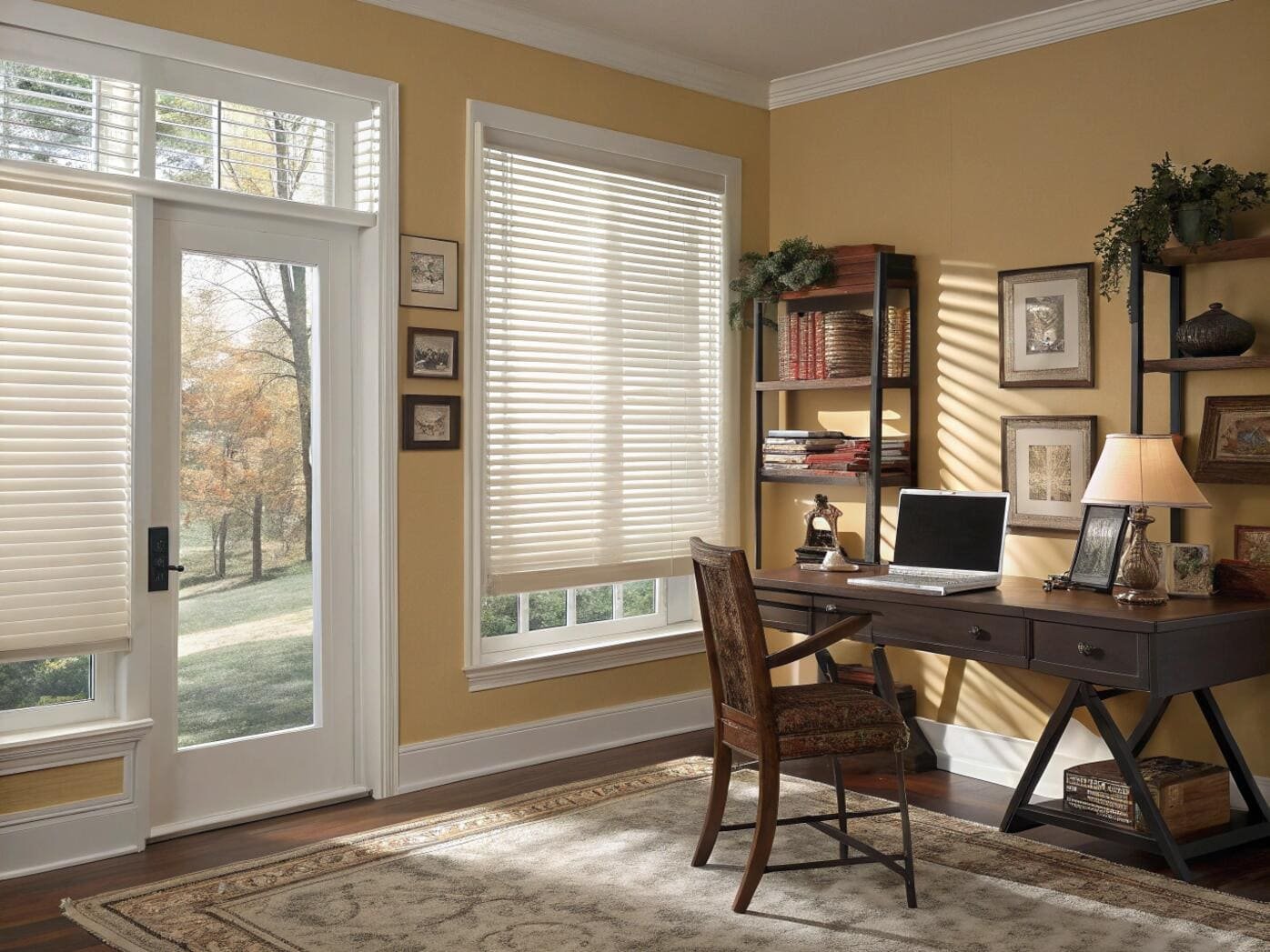
Dog blind destruction typically stems from boredom, anxiety, territorial behavior, or curiosity about outdoor activity. Understanding these motivations enables targeted prevention strategies that address root causes rather than just symptoms.
Exercise requirements must be met before expecting calm indoor behavior around blinds. Under-exercised dogs often express excess energy through destructive behaviors including blind chewing, scratching, and climbing that adequate physical activity prevents.
Mental stimulation through puzzle toys, training sessions, and interactive games reduces boredom-driven destruction. Dogs engaging their minds appropriately are less likely to find entertainment in blind destruction or territorial window watching.
Anxiety management addresses separation anxiety or outdoor trigger responses that lead to blind destruction. Creating calm, secure environments and gradual desensitization to outdoor stimuli reduces anxiety-driven destructive behaviors.
Deterrent training uses positive reinforcement to establish appropriate boundaries around window areas. Consistent commands, rewards for good behavior, and redirection to appropriate activities create lasting behavioral changes.
Physical barriers during training periods prevent access while dogs learn appropriate boundaries. Baby gates, furniture placement, or temporary panels keep dogs away from blinds during the learning process.
Alternative viewing options like window perches or dog beds positioned for outdoor views satisfy natural curiosity without blind interaction. Providing appropriate vantage points reduces interest in blind manipulation for better views.
Blind material selection prioritizes options that resist typical dog behaviors. Aluminum, heavy-duty vinyl, or cordless cellular shades withstand more abuse than delicate materials while maintaining functionality despite occasional contact.
Dog-Specific Prevention Strategies
Behavioral Solutions:
- Adequate exercise: 30-60 minutes daily preventing boredom-driven destruction
- Mental stimulation: Puzzle toys and training reducing idle time
- Anxiety management: Creating secure environments and gradual outdoor desensitization
- Positive training: Rewarding appropriate behavior around window areas
Physical Barriers:
- Elevated mounting: Blinds above typical dog jumping reach
- Temporary barriers: Gates or furniture blocking access during training
- Alternative viewing: Dog beds or perches providing outdoor views safely
- Cord elimination: Removing tempting moving parts that trigger play behavior
Material Considerations:
- Durability priority: Aluminum or heavy-duty synthetic materials
- Cordless operation: Eliminating climbing and chewing opportunities
- Smooth textures: Reducing grip and climbing appeal
- Easy cleaning: Materials withstanding occasional dog contact and cleaning
Are there any blinds that are cat proof?
No blinds are completely cat-proof due to feline climbing abilities and persistence, but aluminum venetian blinds, cordless cellular shades, and motorized options offer the best cat resistance.
While no blinds are completely cat-proof, aluminum venetian blinds with individual replaceable slats, cordless cellular shades, and motorized roller blinds provide the best resistance to typical cat behaviors including scratching, climbing, and cord play.
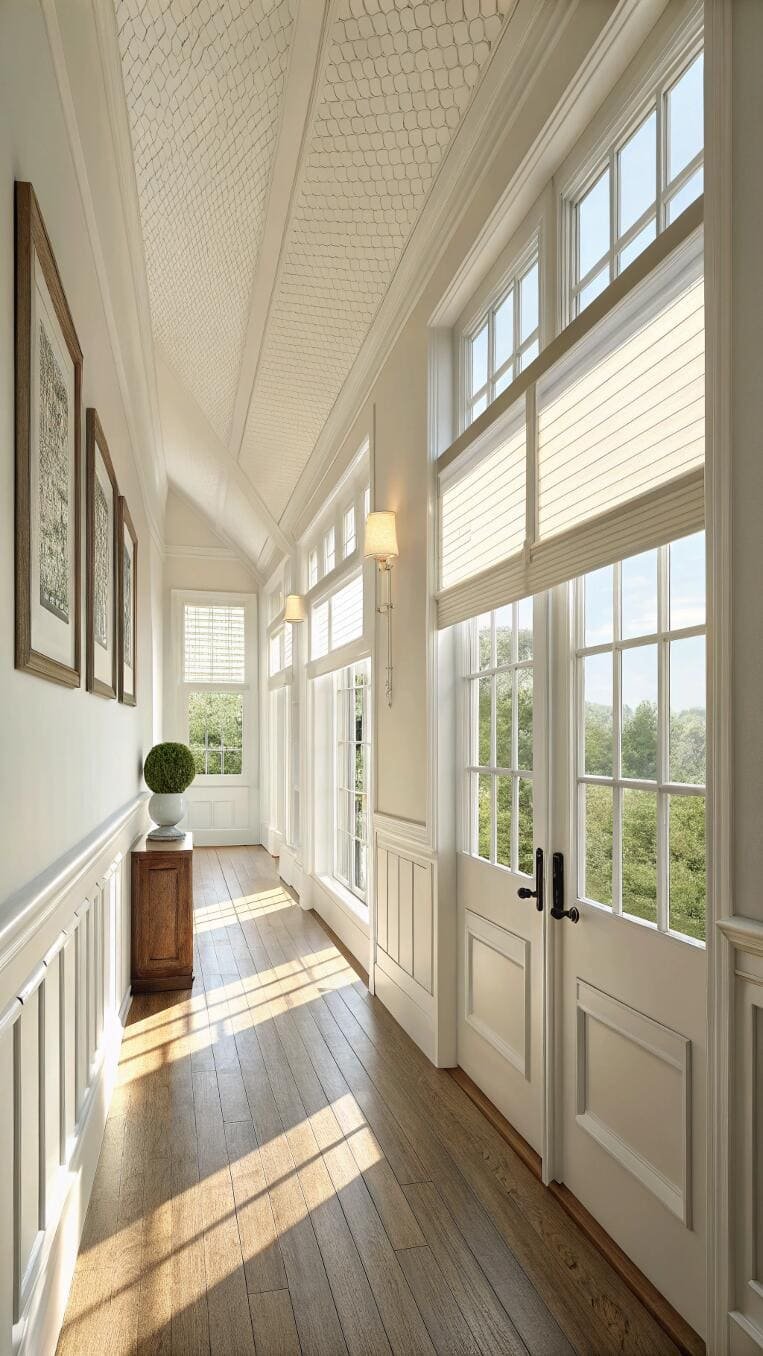
Cat-proofing challenges exceed dog-proofing due to superior feline climbing abilities, sharp claws, and persistent nature when investigating interesting objects. Understanding cat motivations helps select blinds that minimize interaction opportunities and damage potential.
Scratching behavior represents the primary cat threat to blinds through natural claw maintenance instincts that can damage slats, fabrics, and operating mechanisms. Cats prefer vertical surfaces with appropriate texture for effective scratching.
Climbing instincts make cats particularly dangerous to blind cords, chains, and operating mechanisms that provide entertainment and exercise opportunities. Cordless designs eliminate many attractive features that encourage cat interaction.
Curiosity about movement including swaying blind slats, rotating mechanisms, or cord motion triggers hunting instincts that lead to aggressive blind interaction. Stable, motionless blind designs reduce cat interest significantly.
Aluminum slats resist scratching damage better than wood, vinyl, or fabric alternatives while individual slat replacement makes localized damage economically repairable rather than requiring complete blind replacement.
Motorized operation eliminates cords and manual controls that attract cat attention while positioning operating mechanisms beyond typical cat reach. Remote or smartphone control prevents the need for accessible manual controls.
Fabric cellular shades demonstrate unexpected cat resistance through flexible construction that absorbs scratching attempts without permanent damage. The honeycomb structure distributes impact while cordless operation reduces climbing opportunities.
Training effectiveness varies significantly among individual cats, with some responding well to deterrents and boundaries while others persist despite consistent intervention attempts.
Cat Resistance Features
Most Cat-Resistant Options:
- Aluminum venetian blinds: Scratch-resistant with replaceable individual slats
- Motorized cordless shades: No accessible cords or manual controls
- Heavy-duty cellular shades: Flexible fabric absorbing scratching attempts
- High-mounted roller blinds: Beyond typical cat climbing reach
Moderate Cat Resistance:
- Vinyl mini blinds: Some scratch resistance with easy cleaning
- Faux wood blinds: Better than natural wood but still vulnerable
- Fabric roller shades: Depends on material and mounting height
- Roman shades: Cordless versions reducing climbing opportunities
Poor Cat Choices:
- Natural wood blinds: Attractive scratching surfaces easily damaged
- Corded blinds: Safety hazards and irresistible climbing opportunities
- Delicate fabrics: Easily snagged by claws during normal activity
- Vertical blinds: Individual vanes easily damaged by cat interaction
Can cats destroy faux wood blinds?
Yes, cats can destroy faux wood blinds through persistent scratching, climbing, and chewing behaviors that damage slats and operating mechanisms despite composite material durability.
Cats can destroy faux wood blinds through persistent scratching that creates permanent gouges, climbing that bends or breaks slats, and chewing that damages edges. While more durable than natural wood, faux wood blinds remain vulnerable to determined cat behavior.
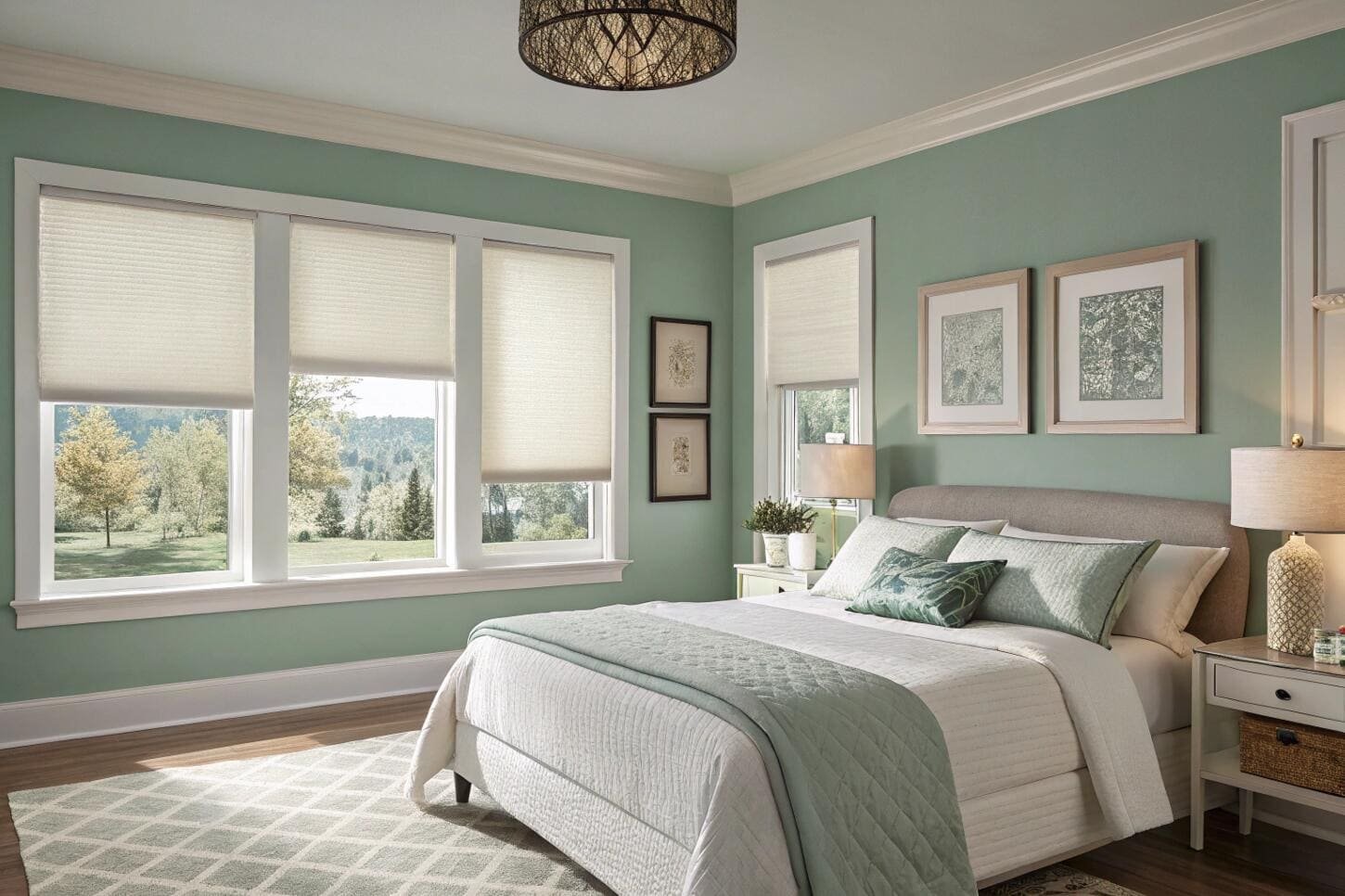
Faux wood blind vulnerability to cat damage occurs despite improved durability over natural wood materials. Understanding damage patterns helps predict lifespan and make informed decisions about blind selection in cat households.
Scratching damage manifests as deep gouges and claw marks that permanently affect blind appearance and smooth operation. Cat claws can penetrate faux wood surfaces, creating rough textures that collect dust and appear unsightly.
Climbing behavior places significant stress on blind slats and mounting hardware as cats use blinds for vertical access or entertainment. Heavy cats or aggressive climbing can bend slats permanently or damage tilt mechanisms.
Chewing incidents typically occur along blind edges where cats can access material comfortably. Persistent chewing can destroy slat integrity and create sharp edges that pose safety concerns for both pets and humans.
Cord interaction remains dangerous in corded faux wood blind systems, with cats often chewing through cord materials or becoming entangled during play. Cordless operation significantly reduces cat interaction and damage potential.
Individual slat replacement provides repair options for localized damage, making faux wood blinds more economical than complete replacement systems when cats damage specific areas rather than entire blinds.
Surface texture affects cat interest, with smooth faux wood finishes being less attractive for scratching than textured alternatives. However, determined cats will still attempt scratching regardless of surface characteristics.
Long-term durability depends on cat personality, household training consistency, and prevention strategies implemented. Some cats ignore blinds completely while others remain persistent despite intervention attempts.
Cat Damage Patterns
Common Damage Types:
- Scratching marks: Deep gouges along slat surfaces from claw sharpening attempts
- Bent slats: Deformation from climbing or aggressive play behavior
- Chewed edges: Damage along accessible blind edges from curious exploration
- Mechanism damage: Tilt controls and lift cords affected by cat interaction
Vulnerability Factors:
- Slat accessibility: Lower blinds more vulnerable to cat reach and interaction
- Cord presence: Manual controls attracting cat attention and play behavior
- Surface texture: Some finishes more appealing for scratching than others
- Cat personality: Individual behavior patterns affecting damage likelihood
Damage Prevention:
- Cordless selection: Eliminating attractive cords and manual controls
- Height mounting: Positioning blinds above typical cat reach when possible
- Alternative scratching: Providing appropriate scratching posts nearby
- Deterrent application: Using safe sprays to discourage blind interaction
How to keep a blind cat safe?
Blind cat safety requires eliminating hazards, maintaining consistent furniture placement, providing audio cues, and choosing cordless window treatments that prevent entanglement and injury risks.
Keep blind cats safe by eliminating all blind cords, maintaining consistent room layouts, using audio cues for navigation, and selecting smooth-edged window treatments that prevent injury during exploration and daily movement.
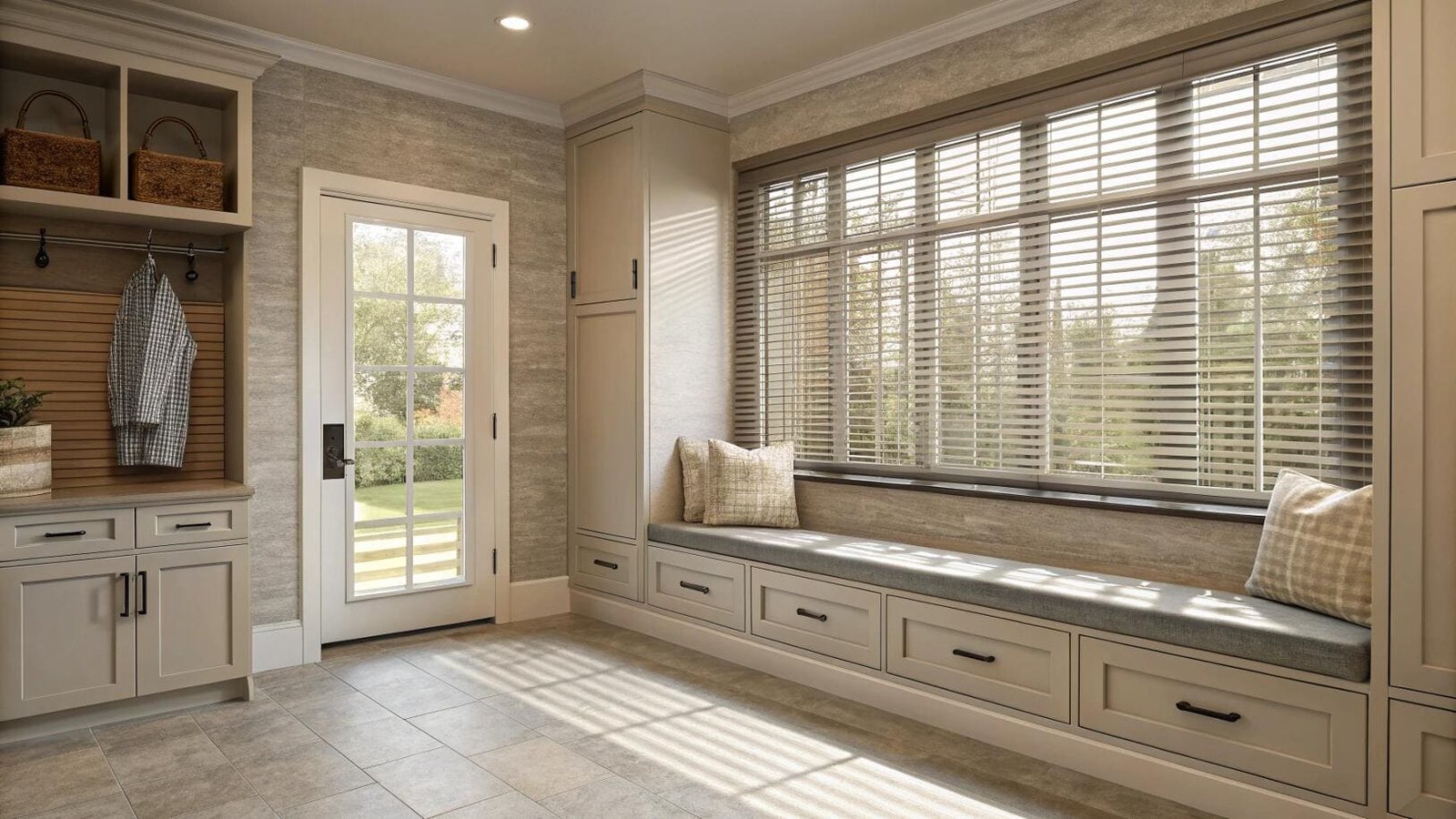
Blind cat safety requires understanding how vision loss affects navigation and behavior patterns around window treatments. These cats rely heavily on memory, touch, and hearing to navigate safely through familiar environments.
Cord elimination becomes absolutely critical for blind cats who cannot see entanglement hazards that sighted cats might avoid. Even shortened cords pose strangulation risks when cats cannot visually assess safe distances during exploration.
Furniture consistency helps blind cats navigate reliably by maintaining familiar pathways and reference points. Moving furniture or blinds disrupts mental mapping that blind cats depend upon for safe navigation.
Smooth edge priority prevents injury during exploration as blind cats use whiskers and physical contact to investigate surroundings. Sharp blind edges or protruding hardware create injury risks during normal movement patterns.
Audio cues through wind chimes or other gentle sounds help blind cats locate window areas and understand spatial relationships. Consistent audio markers assist navigation while providing reassurance about familiar spaces.
Texture considerations affect how blind cats interact with different blind materials through tactile exploration. Rough or sharp textures may cause discomfort or injury during investigation, while smooth surfaces enable safe exploration.
Low mounting reduces fall risks when blind cats climb or jump toward windows for warmth or air circulation. Higher mounting may cause dangerous falls when cats misjudge distances they cannot see.
Clear pathways around window areas prevent blind cats from becoming trapped or confused when navigating to favorite sunning spots. Furniture arrangement should provide obvious routes to and from windows.
Blind Cat Safety Essentials
Critical Safety Measures:
- Complete cord removal: Zero tolerance for any dangling cords or chains
- Consistent placement: Never move blinds or furniture without gradual adjustment periods
- Smooth surfaces: Eliminate sharp edges or protruding hardware creating injury risks
- Clear pathways: Maintain obvious navigation routes to window areas
Navigation Assistance:
- Audio markers: Gentle sounds helping locate window positions
- Texture cues: Consistent floor materials indicating window approach areas
- Furniture guides: Stable reference points for spatial orientation
- Height considerations: Lower mounting reducing fall risks during exploration
Material Selection:
- Cordless operation: Absolutely essential for blind cat households
- Smooth textures: Materials comfortable for tactile exploration
- Stable construction: Blinds remaining stationary during cat contact
- Injury prevention: Rounded edges and secure mounting hardware
Which blind materials are safest for pets and children?
The safest blind materials for pets and children include cordless cellular shades, aluminum venetian blinds, and motorized roller blinds that eliminate strangulation hazards while resisting damage.
Cordless cellular shades, aluminum venetian blinds without chains, and motorized roller blinds provide the safest options for pets and children by eliminating cord strangulation risks while using non-toxic materials that resist common damage patterns.
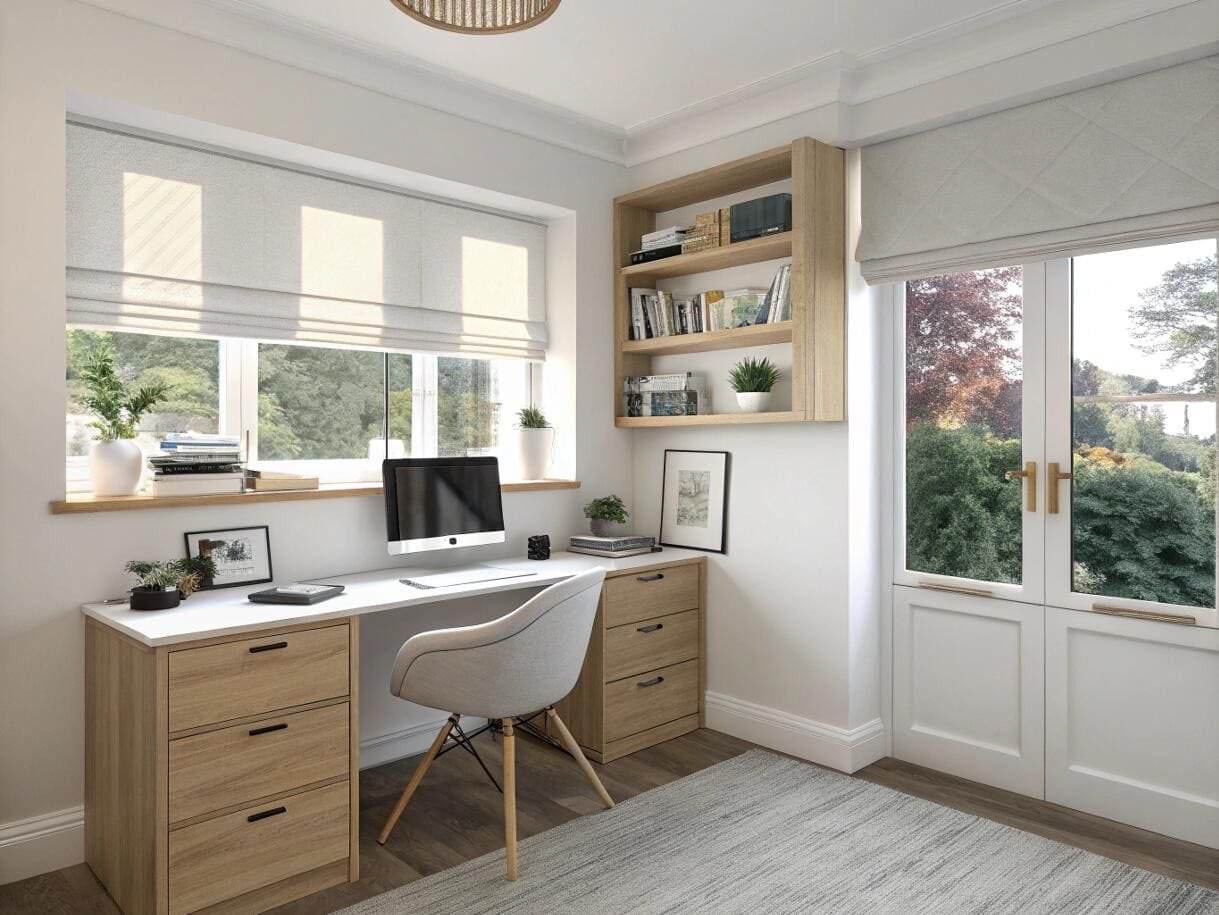
Material safety for pets and children requires evaluating both physical hazards and chemical composition to prevent injuries, poisoning, and developmental harm. Understanding safety standards helps make informed decisions protecting vulnerable household members.
Cordless operation eliminates the primary safety hazard affecting both pets and children through strangulation prevention. Window covering cords cause dozens of child deaths annually while also threatening pets who become entangled during play or exploration.
Non-toxic materials become essential when pets or children might chew or lick blind surfaces during normal interaction. Natural wood finishes, vinyl plasticizers, and fabric treatments may contain chemicals harmful to developing systems.
Aluminum construction provides excellent safety through non-toxic metal composition and durability that resists breaking into sharp fragments. Individual slat replacement prevents exposure to broken pieces while maintaining blind functionality.
Cellular shade fabrics typically use polyester or other synthetic materials that resist pet and child damage while avoiding toxic treatments. The honeycomb construction distributes stress and prevents puncture injuries during contact.
Motorized systems enhance safety by eliminating manual controls accessible to curious children and pets. Remote or smartphone operation prevents the need for reachable switches or cords that create interaction opportunities.
Edge safety requires smooth finishing and secure installation preventing cuts or puncture injuries during normal household activity. Quality manufacturing includes proper edge sealing and hardware placement protecting users from sharp components.
Size considerations affect safety through proper fitting that prevents gaps where children or pets might become trapped. Professional installation ensures appropriate sizing and secure mounting preventing blind-related accidents.
Safety Material Rankings
Highest Safety (Pets and Children):
- Cordless cellular shades: No cords, flexible fabric, non-toxic materials
- Cordless aluminum blinds: Durable metal, individual slat replacement, no sharp edges
- Motorized roller shades: No accessible controls, smooth operation, quality fabrics
- Motorized cellular shades: Combines cordless safety with automated convenience
Good Safety Options:
- Cordless vinyl blinds: Non-toxic synthetic materials, moderate durability
- Cordless faux wood blinds: Composite materials, smooth edges, stable operation
- Cordless fabric Romans: Soft materials, no cords, child-friendly textures
- Panel track systems: Large panels, cordless operation, minimal small parts
Avoid for Safety:
- Any corded blinds: Strangulation hazards for children and pets
- Natural wood with stains: Potential toxic finishes and splintering risks
- Small component blinds: Parts that could be swallowed by children or pets
- Sharp-edged materials: Metal or glass components creating cut risks
Safety Certification Standards:
- CPSC compliance: Consumer Product Safety Commission window covering standards
- GREENGUARD certification: Low chemical emissions for indoor air quality
- ANSI/WCMA standards: Window Covering Manufacturers Association safety requirements
- Child safety testing: Third-party verification of cord safety and durability
Installation Safety:
- Professional mounting: Secure hardware preventing blind falls
- Proper measurements: Exact fitting eliminating entrapment gaps
- Hardware inspection: Regular checking for loose components or wear
- Safety device installation: Additional cord management where required
Conclusion
Pet-friendly blinds require cordless operation, durable materials like aluminum or cellular fabric, and strategic installation above pet reach to ensure safety while minimizing expensive damage.
Protect Your Investment with Pet-Safe Window Solutions
Stop replacing expensive blinds destroyed by pet damage while risking animal safety through poor material choices. Professional pet-friendly blind selection eliminates recurring costs and safety hazards through strategic material selection and installation planning.
Expert consultation identifies optimal blind materials and installation strategies that withstand pet behavior while ensuring safety for all household members including children and visually impaired animals.
Immediate protection benefits:
- Cost savings eliminating recurring blind replacement from pet damage
- Safety assurance through cordless operation preventing strangulation hazards
- Durability optimization selecting materials that resist scratching, chewing, and climbing damage
- Peace of mind knowing pets and children are protected from blind-related injuries
Professional assessment services:
- Pet behavior analysis identifying specific risks and damage patterns for your animals
- Material recommendations based on pet types, sizes, and activity levels
- Safety evaluation ensuring compliance with child and pet protection standards
- Installation planning optimizing blind placement for safety and functionality
Proven pet-safe results:
- Damage reduction up to 90% through appropriate material selection and installation
- Complete elimination of cord-related safety hazards for children and pets
- Extended blind lifespans of 10-15 years even in active pet households
- Insurance protection through safety-certified materials and professional installation
Comprehensive pet-proofing includes:
- Material durability testing ensuring blinds withstand typical pet behaviors
- Safety certification verification meeting child and pet protection standards
- Installation optimization placing controls and cords beyond pet reach
- Training guidance helping establish boundaries and appropriate pet behavior
Quality assurance ensures:
- Non-toxic materials safe for pet and child contact or accidental ingestion
- Cordless operation eliminating primary strangulation hazards completely
- Secure mounting preventing blind falls from pet climbing or playing
- Smooth edges and proper finishing preventing cuts or puncture injuries
Long-term value protection:
- Warranty coverage including pet damage protection where available
- Replacement part availability for localized damage repair rather than full replacement
- Maintenance guidance keeping blinds functional despite occasional pet contact
- Upgrade planning incorporating pet safety into future window treatment decisions
Investment protection through:
- Detailed specifications ensuring materials meet durability and safety requirements
- Professional installation preventing damage during mounting and adjustment
- Performance testing validating operation and safety features
- Ongoing support addressing questions and concerns about pet interaction
Create safe, pet-friendly window solutions that last:
Email: info@velablinds.com | WhatsApp: +86 13720128317
---
[^1]: Find out how to protect your blinds and pets with effective pet-proofing techniques.
[^2]: Uncover the best blinds that withstand pet damage and ensure safety.
[^3]: Explore effective pet-safe sprays that can deter pets from interacting with blinds.Partner with VelaBlinds for Your Next Project
Smart window treatments shouldn't be complicated. After working with 500+ distributors and contractors worldwide, I've streamlined the process to get you quality products, competitive pricing, and reliable support - every time.
Why project professionals choose VelaBlinds:
- ✅ Fast, Accurate Quotes - Detailed specs and pricing within 24 hours
- ✅ Transparent Pricing - No hidden fees, volume discounts clearly outlined
- ✅ Quality Assurance - Direct partnerships with certified OEM manufacturers
- ✅ Project Support - Dedicated account manager from quote to delivery
Start your next project:
📧 Quick Quote: Send your requirements to info@velablinds.com
📱 Direct Contact: WhatsApp +86 137 2012 8317
🌐 Browse Solutions: https://velablinds.com/
📁 Product Resources: Access spec sheets, catalogs & project files
Jimmy Chen, Founder
"I built VelaBlinds to solve the real challenges I faced as a project buyer - long lead times, unclear specs, and unreliable suppliers. Let's discuss how we can power your projects with smarter blinds."
Serving distributors and contractors across North America, Europe, and Australia since 2018.

